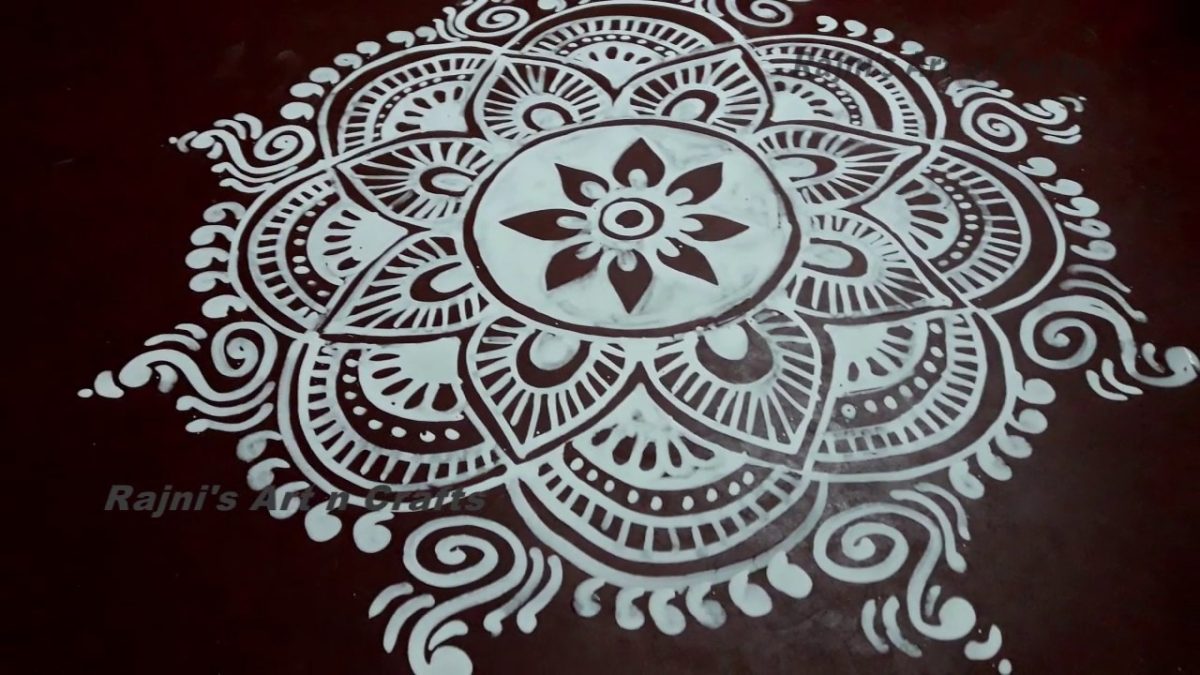ॐ श्री गुरुभ्यो नमः ॐ श्री शिवानन्दाय नमः ॐ श्री चिदानन्दाय नमःॐ श्री दुर्गायै नमः
Source of all Images in this Blog-post : Google Images : ‘Google Image Search’ will reveal the multiple sources of every single image shared here. For more details, kindly see ‘Disclaimer‘
Jhoti Chita is a traditional Odia white art mostly shown in rural areas of Odisha. It is made from rice paste and with a piece of cloth surrounded with a stick is used to create beautiful patterns. People also use their bare fingers to make Jhoti Chita. Jhoti Chita can be created both over walls and on floors.

Jhoti Chitas are created for various festivals & special auspicious occasions like marriages, Manabasa Gurubara and Raja.
The traditional of Jhoti Chita has been utilized for making Saree prints as well.
Jhoti or Chita is the traditional Odia art on the floor and walls, very popular in the rural areas. Jhoti is quite different from Rangoli. While Rangolis are made using coloured powders, Jhoti involves line art using the traditional white coloured, semi liquid paste of rice or Pithau. The fingers are used as brushes in this art form.

Intricate and beautiful floral designs like the lotus, elephants, symbols used in Patta Chitra find place in this form of free hand drawing. Small foot marks of goddess Lakshmi are a must in any Jhoti.

Significance of Jhoti – Chhita :
The Jhoti or Chita are drawn not merely with the intention of decorating the house, but also to establish a relationship between the mystical and the material, thus are highly symbolic and meaningful.
Throughout the year, the village women perform several rituals for the fulfilment of their desires. For each occasion a specific motif is drawn on the floor or on the wall.
For instance, during Lakshmi Puja a stack of paddy or rice sheaves is drawn on the walls structured like a pyramid. During Durga Puja, white dots superimposed with red are painted on the walls. This combination of red and white signifies the worship of Shiva and Shakti.
Homes in Odisha have become canvasses for creating these traditional Jhotis which involve intricate line art. Despite urbanization this agrarian tradition continues among the people of Odisha. Jhoti is considered as a means to attract goddess Lakshmi and hence bringing prosperity into the homes.
Occasions:
Women all over India decorate their homes with traditional patterns during festive occasions. The floors, courtyards, the inner and/or outer walls of the home, entrance to the home, are the areas that lend themselves to these elaborate decorations.
These folk decorations broadly known as Rangolis are believed to bring glory to the festivals, and are indicative of prosperity and happiness.
Usually these art forms are practiced by rural women, though a few urban women do the same to maintain the religious and ritual heritage associated with it.
Jhoti, the Rangoli of Orissa too is practised with the same sentiments. Jhotis are drawn on special occasions and are a must at festivals like, Basanti, Manabashaa Gurubaara, Kaartika, Dola, Jhulana, DhanaLakshmi Puja, Gaja Lakshmi Puja, etc.
The festivals turn into occasions of great joy when they include these decorations along with the preparation of traditional cuisines, for the people of Orissa.
The Hindu month of Margashira (November –December) is considered very auspicious by the devout Hindus. This is the time when Goddess Lakshmi is invoked in every house on Thursdays in the state of Odisha. This is an important festival as it is the harvest season when the grain is thrashed and stored.
The harvest of the Kharif season is worshipped as goddess Lakshmi on these Thursdays. This is a traditional festival followed by the married women in every household.
During this auspicious month, the women folk decorate their houses, entrances, with aesthetically designed motifs using the ground semi liquid rice paste or Pithau. The white Jhoti or Chita is created on a smearing of red earth. The decorations are done on Wednesdays and the Lakshmi Puja is performed on Thursdays.
This is also the time when women vie each other in exhibiting their artistic skills in creating wonderful, symmetrical designs of lotus flowers, conch shell, the ‘Kumbh’, peacocks, elephant, fish, and other floral and geometrical designs.
The feet of Lakshmi entering their house and other large circular designs etched on the floor are a must and are a feast for the eyes of the viewers.
Creation:
It is a common practice for the rural women in Orissa to draw several figures and flower patterns on the mud walls of their thatched homes. They are very beautiful to look at.
An earthy red colour called ‘Dhau’ is smeared on the walls and then the Jhotis are created which provide a wonderful contrast. ‘Dhau’ is also used by few Odiya women while drawing Jhotis on the floor as the background colour.
To draw a Jhoti or Chita, the fingers are dipped into the semi liquid rice paste and made to trace out intricate patterns on the floor or walls.
Sometimes a kind of brush is prepared from a twig with a small piece of cloth attached at one end. This is dipped into the white, semi liquid rice paste to draw patterns on the wall.
At times, the paste is sprinkled on the walls with delicate swirls of the wrist and a pattern resembling bunches of paddy emerges on the wall.
